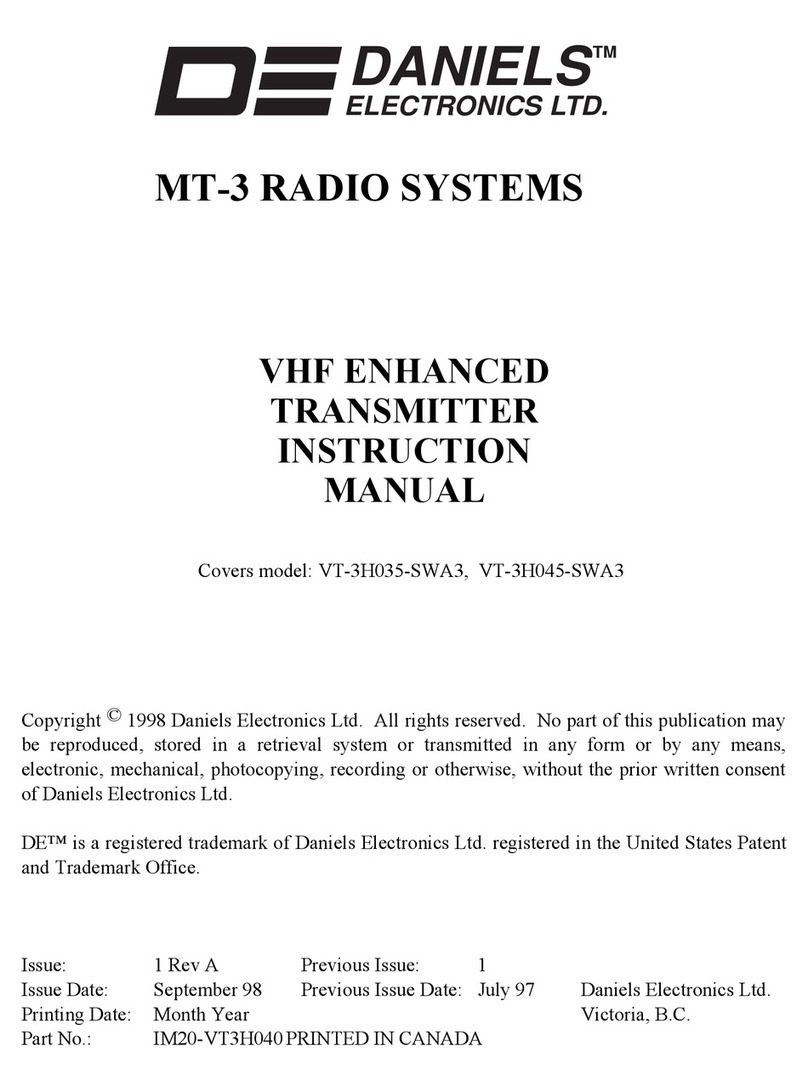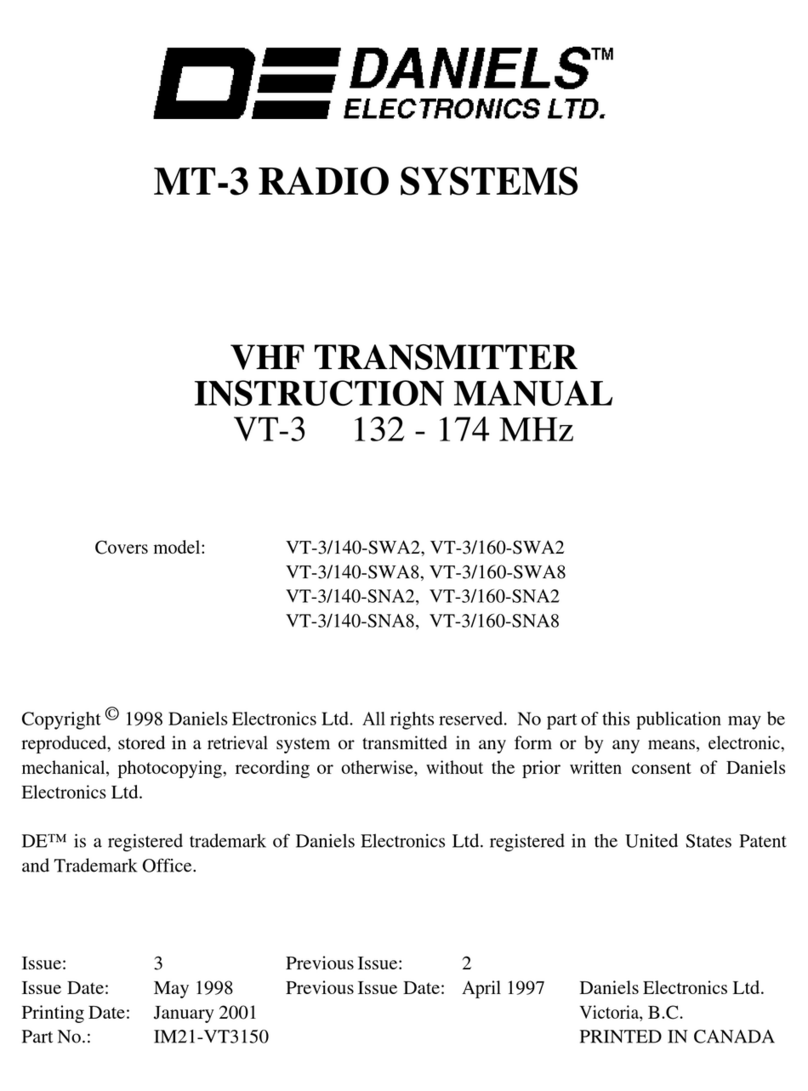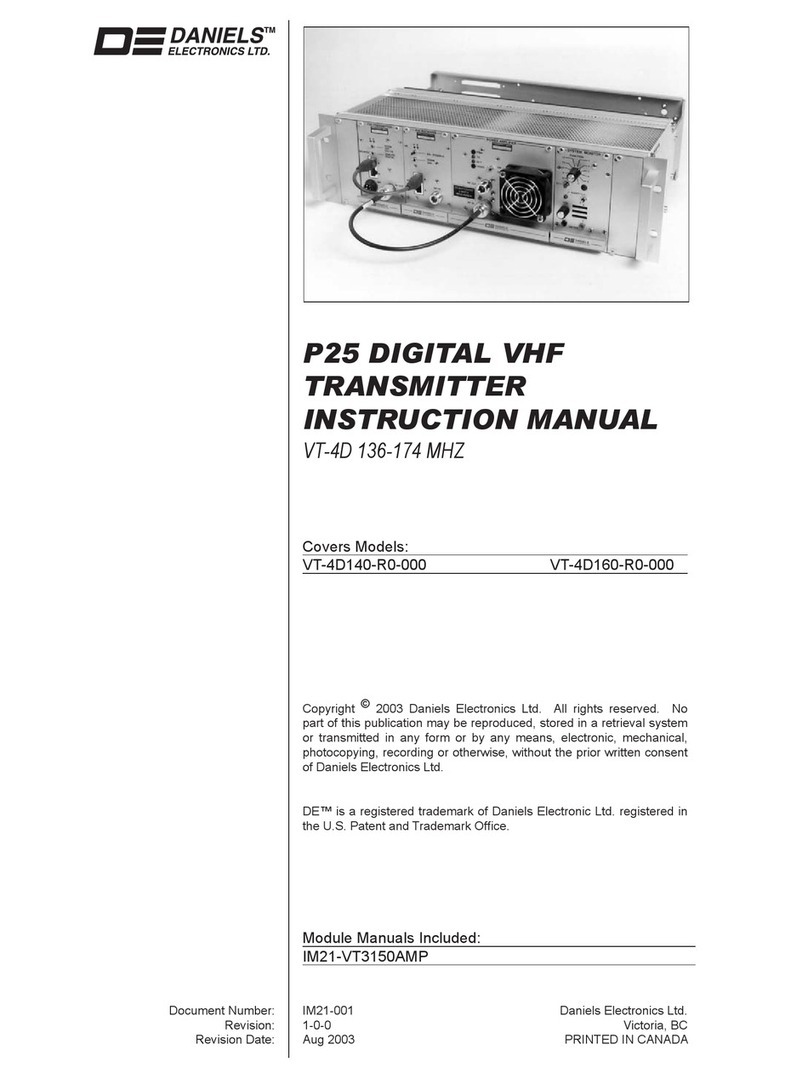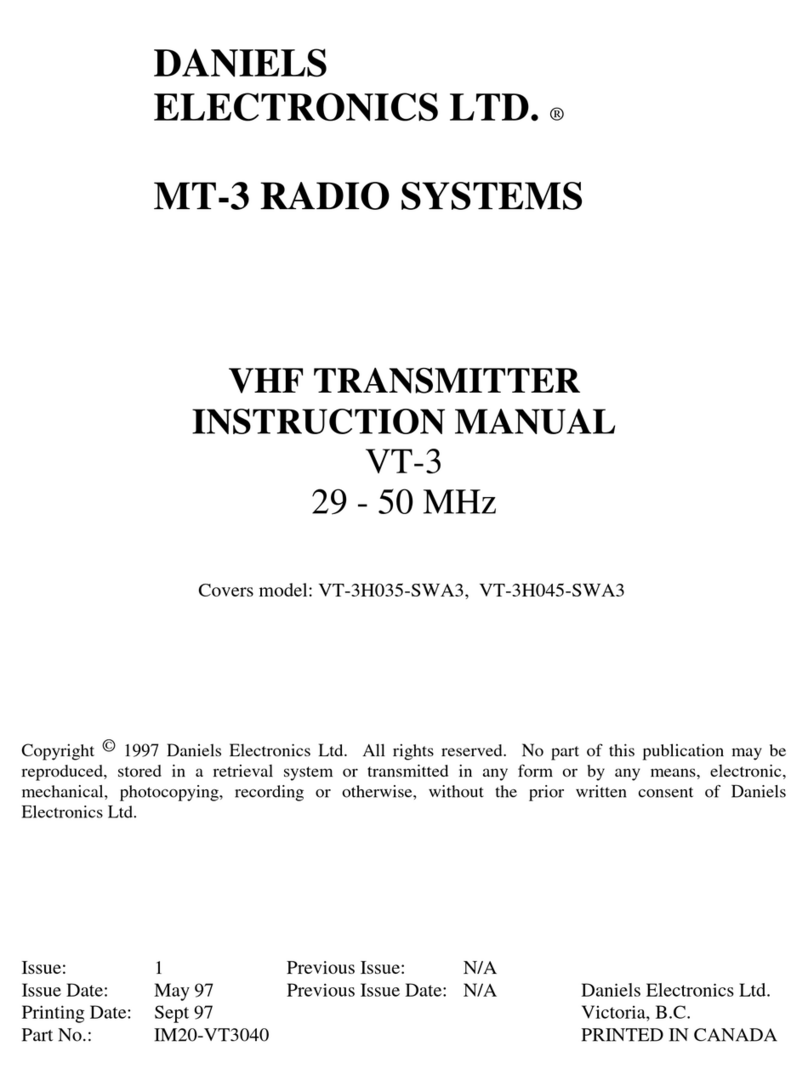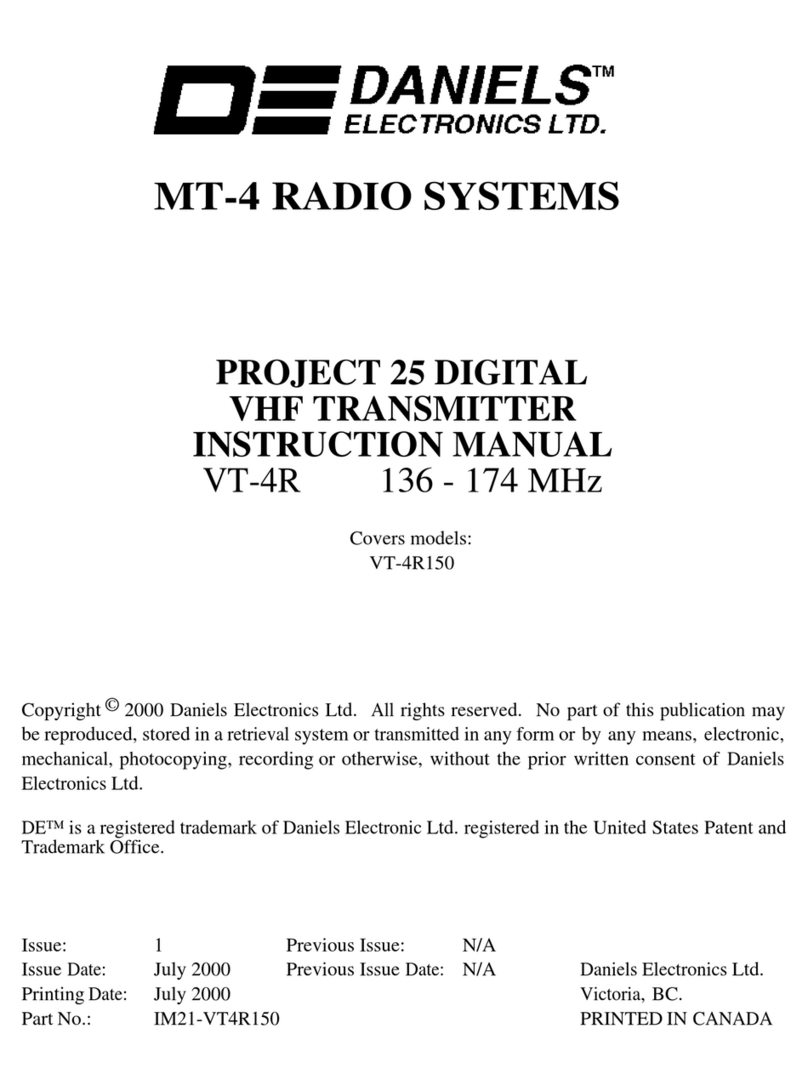
VT-4B150VHF Project25
Digital
Base
Transmitter
Instruction
Manual
2-1
2
THEORY OF OPERATION
2.1
Transmitter Operation
A VT-4B Base Transmitter is constructed using two primary modules: the MT-4 Digital Base
Transmitter Main Board and the VT-4 Amplifier Board. The Main Board supports two plug in
modules: the Transmitter Controller Board and the Transmitter RF Board.
The MT-4 Digital Base Transmitter Main Board receives its audio input through the balanced input
on connector P1, from an external microphone input on connector P1, or from a front panel
microphone. Once on the Main Board, it is immediately digitized using an Analog to Digital
converter.
The digitized signal then passes to the Controller Board, where Digital Signal Processing
techniques are used for volume control, tone signalling, voice compression, filtering, and other
functions. The digital data is then converted to an analog waveform by a Digital to Analog
Converter and passed to the RF board.
On the RF board the signal is used to modulate a RF carrier and then passed to the VT-3 Amplifier
Board for final amplification and transmission.
2.2
Transmitter Programming
The transmitter is programmed with operating frequencies, modulation type, CTCSS and DCS
signalling, and other parameters with the PC-based Radio Programming Software. A special
programming cable is used to connect the serial port of an IBM compatible computer to the Digital
I/O port on the front panel of the Transmitter module. The Radio Programming Software runs
under Window 3.1, Windows 95/98 or Windows NT. Analog test modes may be selected by the
Radio Programming Software, as well as test modes specific to Project 25 digital operation, such
as Bit Error Rate testing.
*** Note that the current version of Radio Programming Software is a demonstration version
only, and cannot be used to program a Transmitter. To program a Transmitter, use Motorola’s
Radio Service Software (RSS), a Motorola Radio Interface Box (RIB), and a Daniels
Programming Cable.
The Transmitter settings are divided into two categories: Transmitter Wide options and Channel
Wide options. When the TX menu is selected from the main screen, both the Transmitter Wide
options and the Channel Wide options for the current channel are displayed. When all Transmitter
Wide and Channel Wide options have been configured in the Radio Programming Software as
required, the radio must have its non-volatile memory updated. The configuration may be saved to
the radio by selecting the TRANSMITTER \ SAVE CONFIGURATION \ TO THE RADIO menu
option. In addition, configurations may be read back from the radio, or saved and read from a file
on the computer by using the TRANSMITTER \ READ CONFIGURATION \ FROM THE
RADIO, TRANSMITTER \ READ CONFIGURATION \ FROM DISK, and TRANSMITTER \
SAVE CONFIGURATION \ TO DISK menu options.






